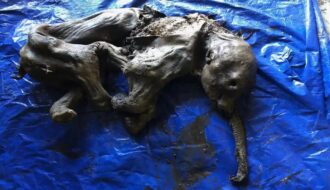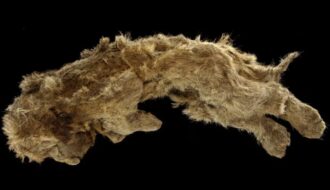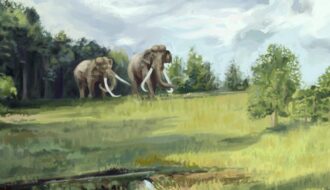Resurrecting the Ice Age Giants: Woolly Mammoth Hybrids Set to Grace the Arctic Landscape in Just Five Years!
Over four billion species are estimated to have walked this planet over the last 3.5 billion years. Ninety-nine percent of them are now gone.
But today’s researchers are hoping to reintroduce these lost species—or at least something very similar to them—within the next five years.
One biotechnology company, called Colossal Biosciences, is aiming to do just that with the long-extinct giant of the last ice age: the woolly mammoth.
Launched by tech entrepreneur Ben Lamm and renowned geneticist George Church, Colossal Biosciences hopes to use gene editing technology to create a cold-resistant elephant that closely resembles its ancient ancestor in form and function.
How to “recreate” a mammoth
Woolly mammoths went extinct around 3,700 years ago, but their close genetic relatives still walk among us to this day.
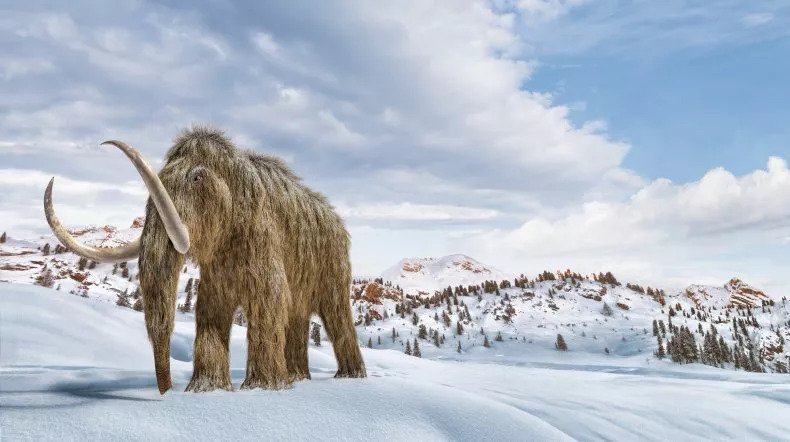
“If you compare the elephant and the mammoth, they’re very closely related,” Church told Newsweek. “They’re closer than African and Asian elephants.”
His co-founder, Lamm, told Newsweek that Asian elephants and woolly mammoths actually share 99.6 percent of their genes. And it is this remaining 0.4 percent that the researchers are focusing on.
“If you look [at their genomes] there are just little changes, and you can introduce ones that you think are likely to make them cold-resistant,” Church said.
In other words, the team is hoping to engineer Asian elephants that are able to withstand the freezing temperatures of the Arctic.
“We’re focusing on what those core traits are that need to be exhibited in order for us to have successful rewilding of the species,” Lamm said. “It’s not just the shaggy coat and the small ears, but it’s also things like how mammals and other animals metabolize things at sub-zero temperatures.”
Why reintroduce mammoths to the Arctic?
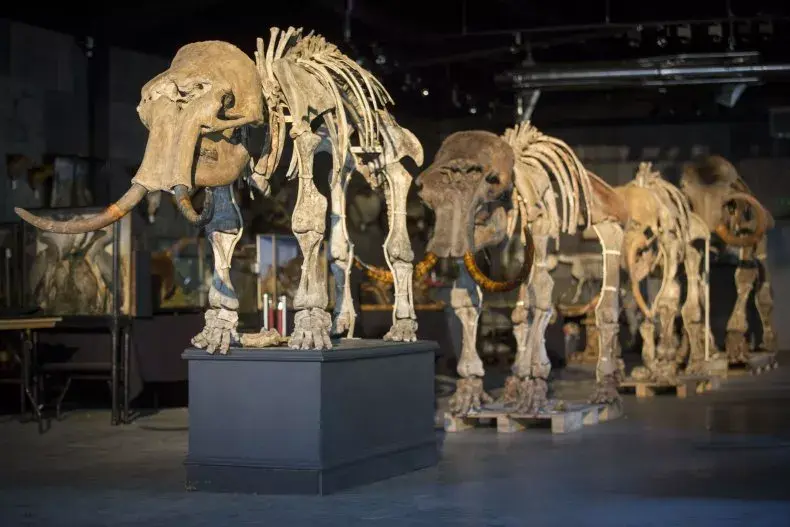
Woolly mammoths are thought to have evolved around 300,000 years ago, spreading across North America, Europe and Asia. Most mammoth populations died out about 10,000 years ago, although the last population of woolly mammoths is thought to have lived out on Wrangel Island in Arctic Siberia until 1650 B.C.
These animals were enormous, growing up to 13 feet tall and weighing around 6 to 8 tons. Their herbivorous diet and massive size allowed them to play a central role in maintaining the health and biodiversity of the ecosystems in which they lived.
Today, the Arctic is largely made up of moss, shrubs and sparse forest. But, when mammoths lived there, the landscape was very different.
“Thousands of years ago…there was mostly grass. Now it’s mostly trees,” Church said. “The Arctic is in need of restoration.”
Re-introducing any native populations in the Arctic would help restore the natural ecosystem. But elephant-mammoth hybrids can do something that most other animals cannot.
“What the elephants do, that no other species can do, is they knock down trees and they restore the grasslands,” Church said.
That might sound counterintuitive as we are told to replant trees to save the planet. But, as Lamm said, “not all trees are created equal.”
In some environments, like the rainforest, trees form a major habitat for many different animal species. But, in the Arctic, Church said that they actually exclude larger animals.
“They also trap the snow, so you get a thick layer of snow that keeps the warm summer heat in like a downed blanket. And that’s bad because it’ll cause thawing,” he said.
When the frozen soil begins to thaw, carbon that has been locked inside it for centuries can be released into the atmosphere.
“[The Arctic] has 1,400 Gigatons of carbon that could be released in the form of methane, which is 80 times worse than carbon dioxide [for global warming],” Church said.
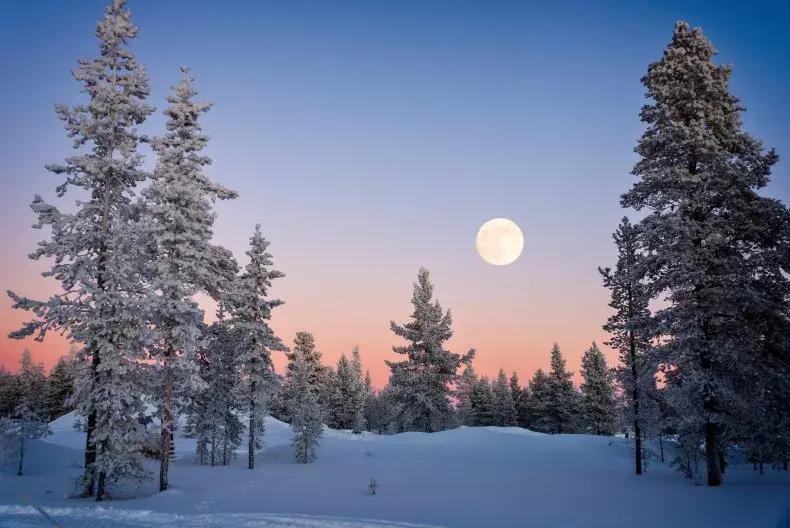
Large herbivores can actually compact this snow, reducing its ability to insulate the ground beneath, thus reducing the risk of soil thaw. Grasslands also reflect more heat and light back into the atmosphere: a thick wooden forest is darker, and will therefore absorb more heat, than a snowy, grassy plain.
Finally, grasses have deep root systems that enable them to store more carbon underground, relative to their size, and they have been shown to be more reliable stores of carbon than trees in unstable habitats.
However, Lamm said that the goal is not to get rid of all of the trees; rather, it is to restore the balance of the ecosystem that was present thousands of years ago.
Why did the mammoth go extinct?
Numerous hypotheses have been put forward as to why the woolly mammoth went extinct. Mammoth populations began to die out at the end of the last Ice Age, about 11,000 years ago. As the Earth warmed, the area of land with suitable climate conditions for the animals shrunk, forcing the animals to retreat further and further North.
As well as shrinking habitats, climate change may have affected how much food was available to these animals—but it wasn’t the only thing these herbivores had to worry about.
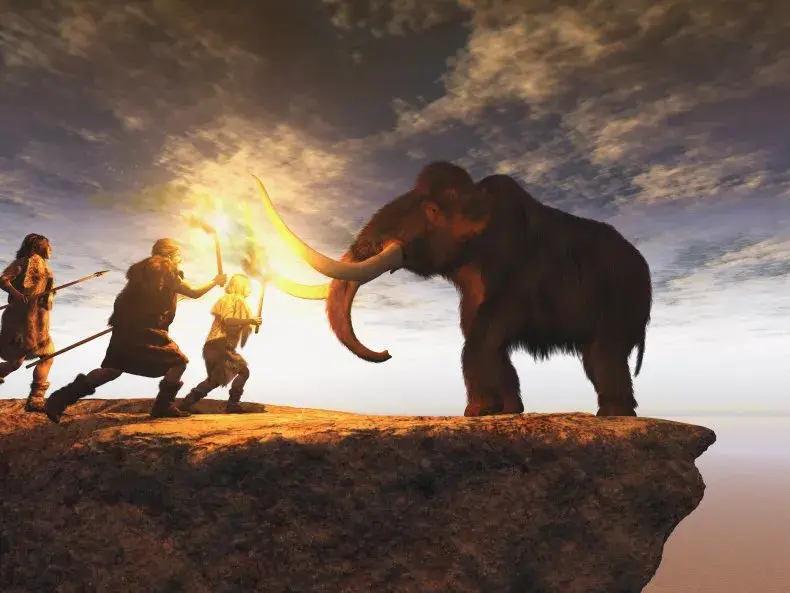
“There are a lot of people who feel that [the extinction of mammoths] was greatly exacerbated by predators that stood on two legs and threw spears,” Church said. “I think that that is quite likely.”
Our impact on these animals can be seen in the fossil record: spear and arrow marks can be seen on the animal’s bones and, in 2017, a mammoth skeleton was found with a spear still lodged inside.
“They have shown that the rise of early men and the decline of mammoths are pretty closely inversely related,” Lamm said. “It’s not just mammoths…when they go to a place for the first time, humans are pretty good at finding the biggest, slowest things and killing them and eating them.”
The problem with the Arctic is that it is not just missing mammoths—it is missing almost every major herbivore. In somewhere like Africa, where food is much more plentiful, large mammals were able to bounce back from human hunting. But the Arctic is a harsh environment to survive in at the best of times.
“It’s fairly sparsely populated by both humans and animals, so it’s probably easier to tip in either direction,” Church said.
What are the criticisms?
The de-extinction project is not without its critics. An article published in the journal Nature Ecology and Evolution in 2017 criticized de-extinction as a waste of resources that could better be used to conserve living species. However, Lamm said that the technologies being developed to create mammoth-like hybrids would also serve as beneficial technologies for human health.
Others have raised ethical concerns for the welfare of these animals. “You don’t have a mother for a species that—if they are anything like elephants—has extraordinarily strong mother-infant bonds that last for a very long time,” Heather Browning, a philosopher at the London School of Economics, told The New York Times.

Church previously told Newsweek that Colossal was working with conservation groups that have experience working with orphaned elephants so as to give them the best quality of life.
“[Elephant orphans] are an unfortunate consequence of poaching and natural death,” he said. “There’s a great deal of knowledge about how to make artificial milk and how to nurture them with minimal herd involvement.”
There are also those who are concerned about the fact that mammoth-elephant hybrids would be the result of genetic engineering. Because these animals can be classed as genetically modified organisms, every step of the process needs to be carefully considered, with mechanisms in place to ensure the animals do not disrupt the ecosystems in which they are placed.
Luckily, mammoths are relatively easy to keep track of.
“It is a lot easier to roll back a several-thousand-pound animal versus a mosquito,” Lamm said. “We’re not working on 50 animals. We’re working on a handful and they’re all moderately decent sized so that we can really monitor what those hopefully intended, and then potentially unintended consequences are so that we can roll them back if we need to.”
When will these mammoth-like creatures be brought back to the Arctic?
“The process of rewilding any species needs to be thoughtfully and carefully handled,” Lamm said. “Our long-term rewilding of the Arctic involves many parties around the table…in full collaboration with local governments, private landowners, and local indigenous people groups.”
If these initial introductions are successful, the team hopes to scale up the project to create a mammoth-like population big enough to have a significant impact on Arctic restoration.
“Colossal’s long-term goal is to have a herd large enough to aid in the rewilding of the Arctic tundra but that will take some time,” Lamm said. “Realistically, we are a decade away from elephants being able to be fully rewilded back into the Arctic where they can also survive on their own.”
However, there are now three labs and over 40 scientists working tirelessly to progress the project. “Currently, the project is on track for our original goal timeline of 2027 including the 22 months of gestation for elephants,” Lamm said.
Ancient Archaeology

